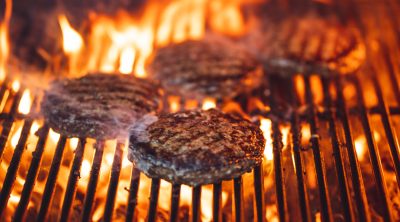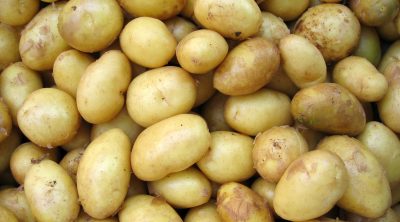After a long day at work, you decide to comfort yourself with warm and sweet banana bread. The last thing you’d want is a loaf with a raw and doughy center!
Undercooking banana bread can actually happen to anyone. To avoid something like this from happening, it means you’ll have to tweak some of your usual baking techniques to perfect your recipe. Learning some of the tips in this article should help ensure your banana bread comes out perfect every single time.
How to fix undercooked banana bread
If your banana bread is undercooked, re-heating it at 350F for 10-20 more minutes is fine. Insert a skewer in the center of the loaf to check if the bread is done. If the skewer comes out clean and with no batter clinging to its sides, allow the bread to cool before wrapping it for storage. If there is batter clinging on the skewer, bake again for a few minutes.
What are the common mistakes that ruin your banana bread recipe?
One thing you must remember when making banana bread is that you should not be using underripe bananas. You need them to be overripe because they’re easier to mash. Ripe bananas also give more moisture while adding a more natural sweet flavor we so fondly associate with bananas.
Adding too much banana meanwhile may also do more harm than good. Using more than what’s needed can increase the chances of your recipe undercooking and can even make your creation look unappealing. If you have leftovers during food prep, simply freeze them for later use.
Another common mistake is overmixing the batter. Too much flour dries the bread while not using enough may make it too wet. Gluten tends to develop more if you stir a lot, making the bread tough and rubbery. Simply stir the ingredients until it’s moist and then do no more. This results in softer and tender banana bread. The ratio of flour to banana is also important to maintain the moisture level.
When you’re done baking it in the oven, make sure to insert a skewer in the center of your loaf to determine if your banana bread is done from the inside and out. If raw batters are sticking, then place the bread back in the oven for a few more minutes before checking it again.
It’s also recommended to have a thermometer handy and stick it straight down to the center of the loaf. The reading on your banana bread should be not lower than 200F before you can finally say the recipe is done. Once the bread is cooked and ready to be served, immediately remove the bread from the pan and let it cool on a cooling rack.
This prevents the bread from getting soggy before you transfer it to a container. Perfectly cooked and cooled banana bread makes for cleaner slices and a tastier flavor.
Why is my banana bread raw in the middle?
Using a pan that is bigger than what the recipe needs can result in banana bread that is raw in the middle. A big pan will need additional cooking time while a smaller one will make your loaf thicker than intended.
A high-temperature setting will also cause your banana bread to cook quickly on the outer portions so that the inner portion won’t have time to catch up.
Is it safe to eat undercooked banana bread?
Since bread contains eggs and/or flour, if undercooked, it may contain dangerous bacteria which can be harmful to your health. If reheating in the oven is not an option, eating undercooked banana bread may cause sickness so it’s generally not recommended.
A way around this is cutting the soggy interior into slices, cooking them again on a griddle, and combining them with other food like bacon for another fun recipe.
How do I keep my banana bread moist?
Overripe or frozen bananas are great at retaining moisture when baking banana bread. They also make your recipe tastier. Using oil instead of butter is also better when making banana bread.
Stirring the wet and dry ingredients gently with a spatula also produces a more tender mixture. Finally, storing banana bread in plastic, cloth, or foil also helps retain the loaf’s natural moisture.
Why is my banana bread recipe inconsistent?
If you’re using the same recipe that your mother has passed down but your banana bread is producing mixed results, your oven and pans may have something to do with it. A glass pan bakes more slowly than the latest stainless steel pans.
They bake even longer than traditional aluminum pans so it’s always best to take note of the pans that you’ll use before heating them. Preheating your oven is also important because your loaf may not rise as high as you intend them to if this step is skipped.
Have an oven thermometer handy to also help you verify the temperature.
How long does banana bread last?
How long your banana bread lasts depends on several factors. Your ingredients come into play including the bananas themselves. There are a lot of ways to preserve your banana bread to ensure everyone gets a taste of your yummy recipe.
Generally, well done and moist banana bread can last up to a week in the pantry. Placing it in the refrigerator keeps the bread fresh for up to two weeks.
Putting it in the freezer meanwhile will make your banana bread last for up to three months, all without diminishing its gorgeous flavors and texture.
Conclusion
While the ideal banana bread for you and your family should be moist, banana bread that’s too wet or dry is unappealing. After taking notes of the common mistakes that you should look out for when baking your banana bread, you’ll be able to prevent these situations from happening.
If for some reason you’ve made your banana bread undercooked, it can be re-baked and put back in the oven for a more enjoyable experience.







Leave a Reply